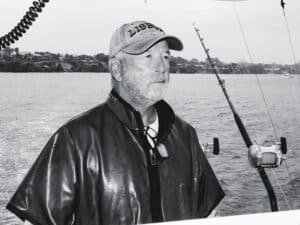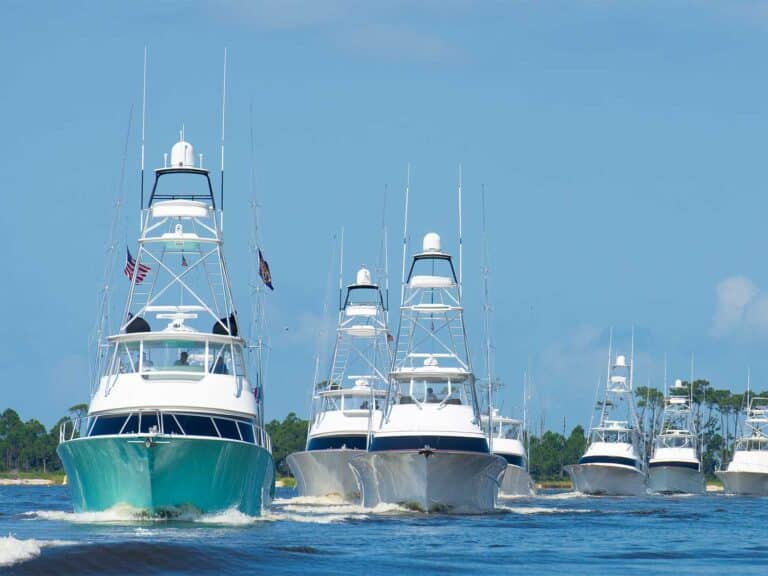
A large part of billfishing’s allure lies in the opportunity it gives you to travel to some of the world’s most exotic and beautiful locations. Puesta del Sol, located in a fairly remote region on Nicaragua’s Pacific coast, definitely fits the bill.
Mention Nicaragua to most Americans past a certain age and you’re likely to get raised eyebrows and memories of a war-torn corner of Central America circa the 1980s. However, Nicaragua rebounded quite well from those dark days of revolution and now vies for a piece of the tourism boom already experienced by its southern neighbor, Costa Rica. In fact, today tourism ranks second (behind agriculture) among Nicaragua’s most important industries.
I recently fished in the Flor de Caña International Tournament, hosted annually by Marina Puesta del Sol (the name means “sunrise marina” in Spanish). Even though I’ve fished throughout Mexico, Guatemala, El Salvador and Costa Rica, this was my first trip to Nicaragua. Puesta del Sol certainly offers one of those interesting contradictions of life in Central America: Just when you’re certain that your driver is hopelessly lost, after traveling for hours down a mostly paved two-lane road, which became a single cobblestone lane, which in turn narrowed to a jungle-laden dirt path for the final half-hour, you catch sight of your final destination, looming at the end of the trail. When you reach this point at last, you’ll find an amazing surprise. The property offers a full-service marina, a restaurant and 19 spacious suites located in two large colonial-style buildings. The buildings overlook a large saltwater estuary in the shadow of the San Cristóbal volcano, which makes for a spectacular sunrise.

| |Dave Ferrell|
The offshore fishing in Nicaragua is comparable to that of other notable Central American nations, although a sloping bottom contour means a long run of some 50-plus miles to reach water deeper than 500 feet. But once you get to the edge, conditions improve dramatically, and it’s not uncommon to get 10, 20, 30 or even more sailfish bites on a good day, with the chance of a shot at a blue marlin or two. During this year’s tournament, there were several teams, including ours, that were fortunate enough to score two blue marlin releases as well as a double handful of sailfish in a single day. That’s pretty good fishing no matter where you are in the world.
Several captains also told us that around 70 miles offshore is a great-looking drop-off, and it sounded very promising — the perfect spot for an overnight blue marlin and swordfish combination trip in the near future. There aren’t many boats fishing consistently here, so the pressure is light, and many potential hot spots like this remain virtually untouched by recreational anglers.
This is not to say that the deep blue is the only game in town for billfish. A fairly common practice in the region, especially in the shallower waters, is the use of a homemade fish aggregating device (FAD) to hold fish much closer to the beach, often in the 20- to 30-mile range. If you’re fortunate enough to locate a FAD, the fishing can be spectacular, as the sailfish stack up and feed heavily on baitfish attracted by the shade and shelter it provides.
Billfish make up most of the recreationally targeted species, but there’s always a shot at a few nice dorado (mahimahi). You will also find the usual suspects around the FADs, along with sailfish. It’s unfortunate that yellowfin tuna have been so heavily purse-seined off Central America, but it’s always a possibility that you’ll run across a few while offshore, especially around pods of spinner dolphins.

Back inshore, the shallow mangrove-lined estuary beckons light-tackle anglers. Whether fishing from an outboard-powered panga skiff or a manually powered kayak, it’s a great destination for those seeking a wide variety of game fish. Guests enjoy access to several two-person kayaks, but anglers should bring their own tackle and a variety of lures, including bucktails, swimbaits and topwaters.
The entire Pacific region of Nicaragua is also a surfer’s paradise. Breaks hold swells averaging 4 to 6 feet — and usually much larger — from March to October, with a strong offshore breeze as well. The popular breaks are accessible by panga for a nominal fee, and there’s even a nearby surf camp that specializes in expeditions, including tow-in surfing using personal watercraft.
Back at Marina Puesta del Sol, there’s a refreshing pool for cooling off after a long day on the water, as well as a great bar and restaurant located right above the docks — the fried snapper and fresh jumbo shrimp are hard to beat. The accommodations are luxurious, the showers are hot, and the food’s terrific. You couldn’t ask for more in a top-notch fishing destination that’s both remote and readily accessible.
Getting There
Nicaragua is often called the land of lakes and volcanoes. Lake Nicaragua and Lake Managua are the largest bodies of fresh water in Central America, and a chain of 58 volcanoes (six of which are active) is located roughly parallel to the nation’s Pacific Coast. Nicaragua is both the largest and the lowest of the Central American nations, with the Caribbean Sea to the east and the Pacific Ocean to the west.
Most international travelers fly into the Augusto Sandino International Airport in the sprawling capital city of Managua. Depending on traffic,** Puesta del Sol** is about a 31/2-hour drive from Managua. It’s not a well-known destination, so airport transfers should be arranged in advance. The cost is approximately $150 one way.
Visiting boaters will find the inlet passable on all but the biggest of swells. The channel doglegs slightly perpendicular from the beach, and the end is marked with a small black-and-white sea buoy. As with any shifting inlet channel, it’s best to approach in good light and watch a few wave sets before proceeding inward. The approach is very easy once inside the inlet, and it’s just under two miles to Marina Puesta del Sol. The marina itself offers well-maintained floating docks, high-speed fuel pumps (gas and diesel), and a small office for customs and immigration as an official Nicaraguan port of entry. Visiting boats will need their zarpe (the port-exit clearance document) from their previous port of departure in order to enter Nicaragua. The dockmaster’s office monitors VHF channel 16.
The country’s national currency is the córdoba, although the U.S. dollar also serves as an official currency of Nicaragua, so there’s really no need to exchange money. Major credit cards are widely accepted as well. Change for purchases made in dollars will almost always be given in córdobas. marinapuestadelsol.com







